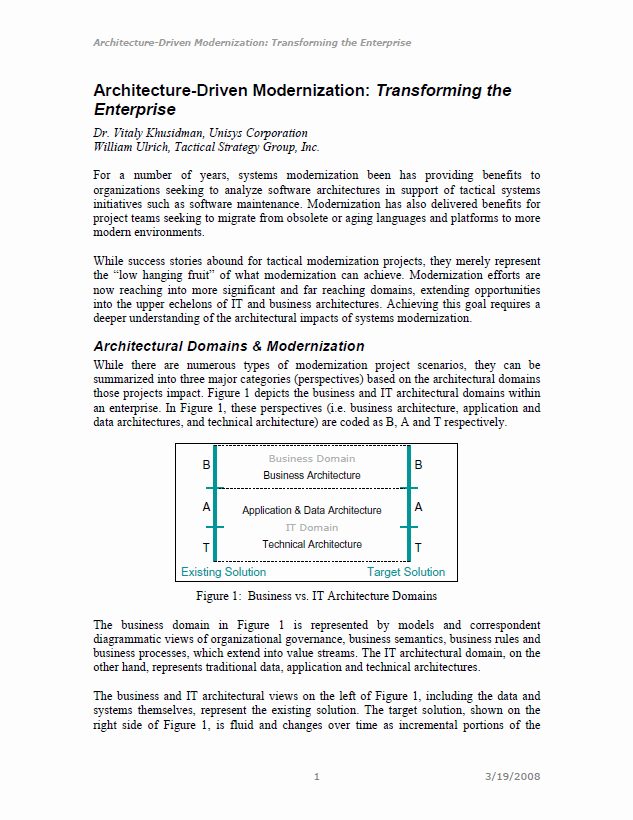For a number of years, systems modernization been has providing benefits to organizations seeking to analyze software architectures in support of tactical systems initiatives such as software maintenance. Modernization has also delivered benefits for project teams seeking to migrate from obsolete or aging languages and platforms to more modern environments.
While success stories abound for tactical modernization projects, they merely represent the “low hanging fruit” of what modernization can achieve. Modernization efforts are now reaching into more significant and far reaching domains, extending opportunities into the upper echelons of IT and business architectures. Achieving this goal requires a deeper understanding of the architectural impacts of systems modernization.

















